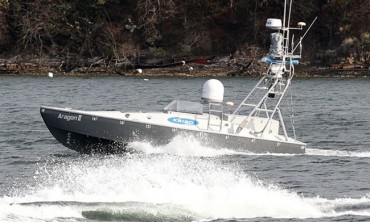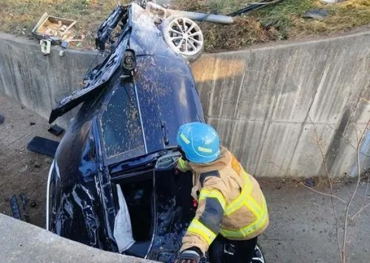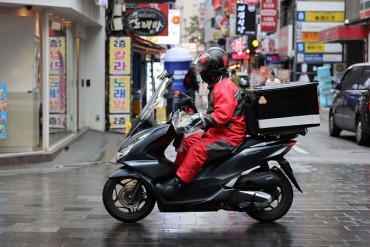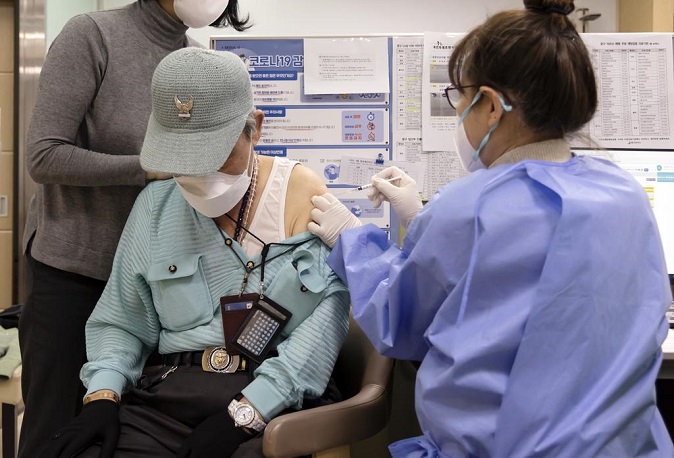
This file photo taken April 14, 2022, shows an elderly man receiving a second booster shot at a Seoul clinic as the government urges senior citizens to get second booster shots to prevent serious disease and death. (Yonhap)
SEOUL, April 24 (Korea Bizwire) — South Korea’s daily new coronavirus cases stayed below 100,000 for the fourth day in a row Sunday, with most of the country’s virus restrictions set to be lifted this week amid the slowdown of the omicron wave.
The country added 64,725 new COVID-19 infections, including 36 cases from overseas, bringing the total caseload to 16,895,194, according to the Korea Disease Control and Prevention Agency (KDCA).
The omicron wave has been on the decline after the country’s daily infections reached the peak of 621,178 cases on March 17.
The death toll from COVID-19 came to 22,133, up 109 from the previous day. The fatality rate was 0.13 percent. The number of critically ill patients came to 726, down from 738 a day earlier.
South Korea had reported 33,460 cases as of 9 p.m. Sunday, down by 29,011 from the same time the previous day. Daily cases are counted until midnight and announced the following morning.
To reflect the weakening pandemic, health authorities will downgrade COVID-19 to the second-highest level of its four-tier infectious disease control system Monday, the KDCA said.
The government lifted major COVID-19 social distancing requirements, except the mask mandate, this past Monday.
The removed restrictions included a curfew on the operating hours of restaurants, cafes and other small businesses, as well as the cap on the size of private gatherings.
The eased rules will also allow eating and drinking on public transit, theaters, religious houses and indoor stadiums beginning Monday, the health agency said.
In early May, the government will also determine whether to lift the mask mandate in outdoor places, although it has said requiring masks indoors will be unavoidable for “a considerable time.”
Under the changed policy, coronavirus patients will be free of mandatory self-quarantine and can receive treatment at local clinics as early as late May.
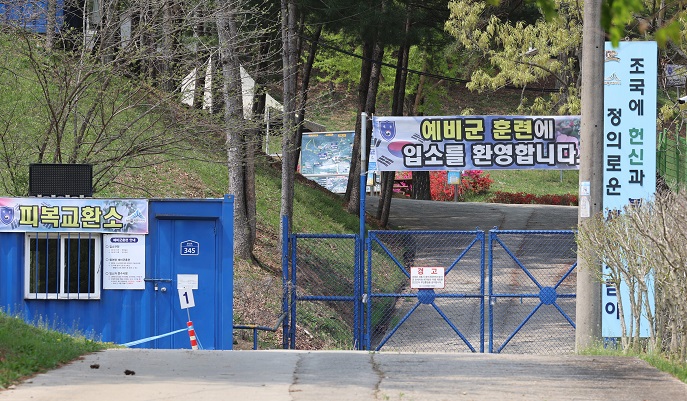
This photo taken April 22, 2022, shows a training camp for reserve forces, which will resume training sessions in the Sejong Special Self-Governing City on June 2 amid the slowdown of the omicron variant and eased virus curbs. (Yonhap)
The government also will temporarily lift visitation restrictions at nursing homes and senior care hospitals for three weeks starting April 30.
Currently, in-person visits without any barriers are strictly prohibited at the moment to protect the elderly from the virus.
Those who have recently recovered from the coronavirus can visit their family members at such facilities and have physical contact with them, as long as they are fully vaccinated.
If a visitor has not been infected, he or she should receive a booster shot, and their elderly family member should receive a second booster shot.
The temporary policy runs until May 22.
Of the locally transmitted infections, Seoul reported 10,375 cases and its surrounding Gyeonggi Province added 15,249 cases. The southern city of Daegu identified 3,399 cases.
As of midnight Saturday, 44.54 million, or 86.8 percent of the 52 million population, had been fully vaccinated, and 33.06 million, or 64.4 percent, had received their first COVID-19 booster shots, the KDCA said.
The government urged the elderly to get second booster shots to prevent serious disease and death, which it began administering this past Monday.
A total of 836,281 people, or 1.6 percent of the population, have received second booster shots across the country. Nearly 90 percent of them were aged 60 and older.
(Yonhap)




